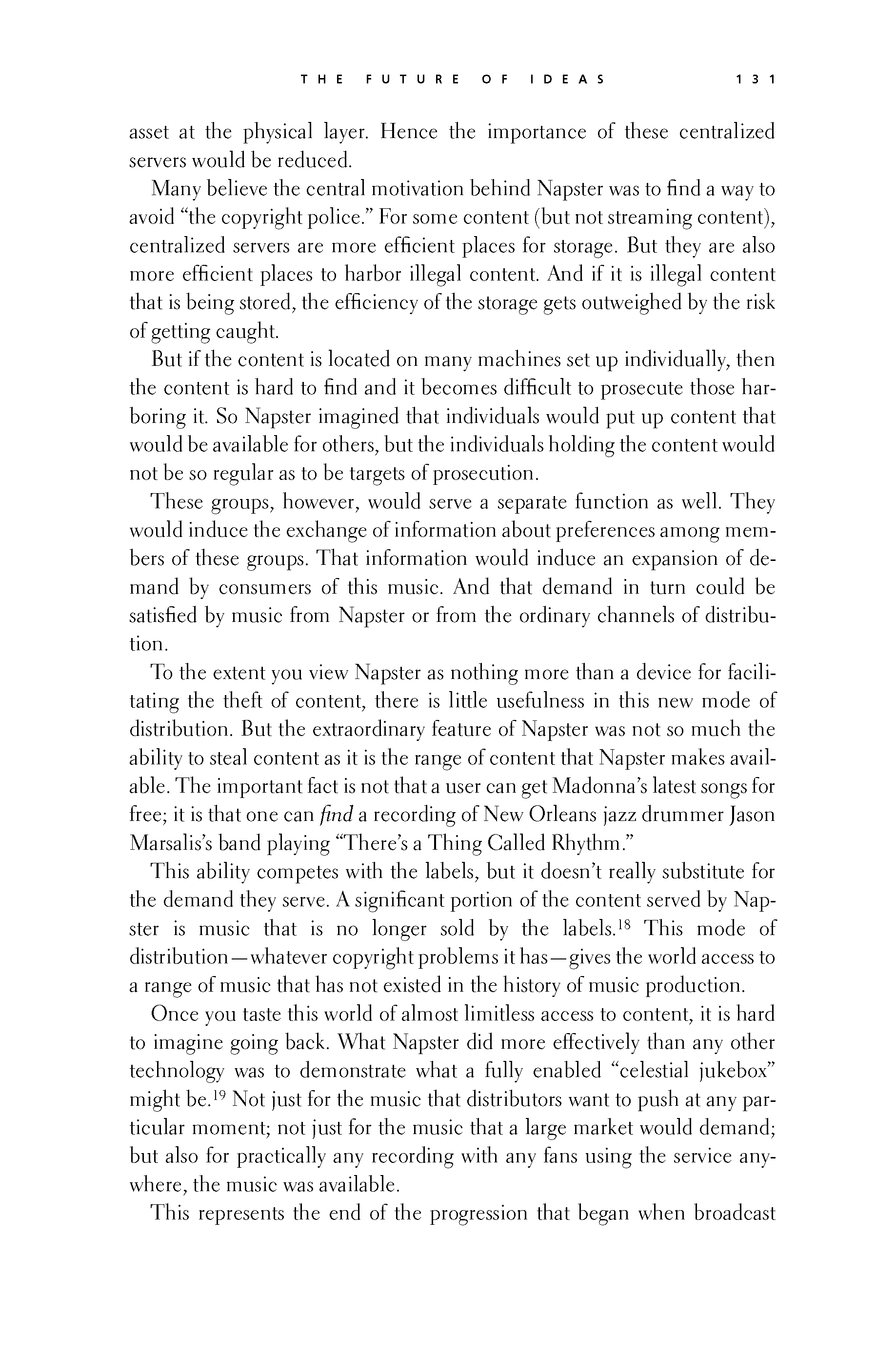 p130 _
-chap- _
toc-1 _
p131w _
toc-2 _
+chap+ _
p132
p130 _
-chap- _
toc-1 _
p131w _
toc-2 _
+chap+ _
p132
asset at the physical layer. Hence the importance of these centralized
servers would be reduced.
Many believe the central motivation behind Napster was to find a way to
avoid "the copyright police." For some content (but not streaming content),
centralized servers are more efficient places for storage. But they are also
more efficient places to harbor illegal content. And if it is illegal content
that is being stored, the efficiency of the storage gets outweighed by the risk
of getting caught.
But if the content is located on many machines set up individually, then
the content is hard to find and it becomes difficult to prosecute those har-
boring it. So Napster imagined that individuals would put up content that
would be available for others, but the individuals holding the content would
not be so regular as to be targets of prosecution.
These groups, however, would serve a separate function as well. They
would induce the exchange of information about preferences among mem-
bers of these groups. That information would induce an expansion of de-
mand by consumers of this music. And that demand in turn could be
satisfied by music from Napster or from the ordinary channels of distribu-
tion.
To the extent you view Napster as nothing more than a device for facili-
tating the theft of content, there is little usefulness in this new mode of
distribution. But the extraordinary feature of Napster was not so much the
ability to steal content as it is the range of content that Napster makes avail-
able. The important fact is not that a user can get Madonna's latest songs for
free; it is that one can _find_ a recording of New Orleans jazz drummer Jason
Marsalis's band playing "There's a Thing Called Rhythm."
This ability competes with the labels, but it doesn't really substitute for
the demand they serve. A significant portion of the content served by Nap-
ster is music that is no longer sold by the labels.[8-18] This mode of
distribution -- whatever copyright problems it has -- gives the world access to
a range of music that has not existed in the history of music production.
Once you taste this world of almost limitless access to content, it is hard
to imagine going back. What Napster did more effectively than any other
technology was to demonstrate what a fully enabled "celestial jukebox"
might be.[8-19] Not just for the music that distributors want to push at any par-
ticular moment; not just for the music that a large market would demand;
but also for practically any recording with any fans using the service any-
where, the music was available.
This represents the end of the progression that began when broadcast
[[131]]
p130 _
-chap- _
toc-1 _
p131w _
toc-2 _
+chap+ _
p132